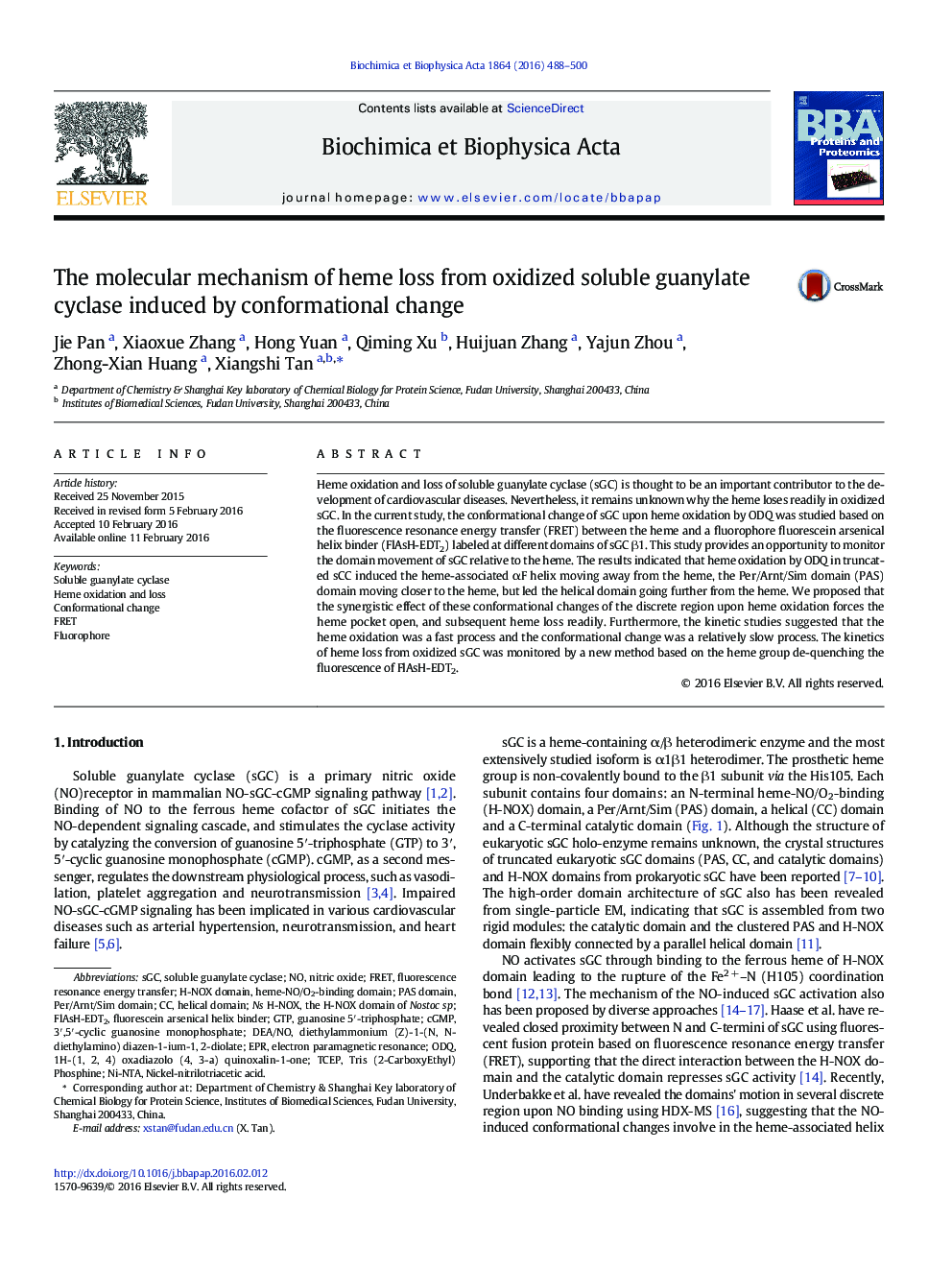| Article ID | Journal | Published Year | Pages | File Type |
|---|---|---|---|---|
| 1179165 | Biochimica et Biophysica Acta (BBA) - Proteins and Proteomics | 2016 | 13 Pages |
•A fluorophore FlAsH-EDT2 monitoring protein conformational change is labeled at different domains of sGC β1 by mutagenesis.•The molecular mechanism of sGC oxidation and loss induced by conformational change is studied based on FRET.•The synergistic effect of the conformational changes could force the heme pocket open and heme loss.•The kinetics of heme loss from oxidized sGC is monitored by the heme de-quenching the fluorescence of FlAsH-EDT2.
Heme oxidation and loss of soluble guanylate cyclase (sGC) is thought to be an important contributor to the development of cardiovascular diseases. Nevertheless, it remains unknown why the heme loses readily in oxidized sGC. In the current study, the conformational change of sGC upon heme oxidation by ODQ was studied based on the fluorescence resonance energy transfer (FRET) between the heme and a fluorophore fluorescein arsenical helix binder (FlAsH-EDT2) labeled at different domains of sGC β1. This study provides an opportunity to monitor the domain movement of sGC relative to the heme. The results indicated that heme oxidation by ODQ in truncated sCC induced the heme-associated αF helix moving away from the heme, the Per/Arnt/Sim domain (PAS) domain moving closer to the heme, but led the helical domain going further from the heme. We proposed that the synergistic effect of these conformational changes of the discrete region upon heme oxidation forces the heme pocket open, and subsequent heme loss readily. Furthermore, the kinetic studies suggested that the heme oxidation was a fast process and the conformational change was a relatively slow process. The kinetics of heme loss from oxidized sGC was monitored by a new method based on the heme group de-quenching the fluorescence of FlAsH-EDT2.
